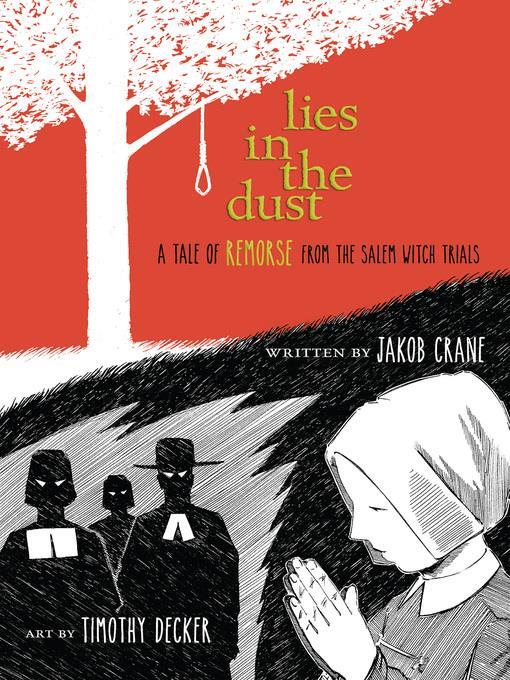
Lies in the Dust
A Tale of Remorse from the Salem Witch Trials
کتاب های مرتبط
- اطلاعات
- نقد و بررسی
- دیدگاه کاربران
نقد و بررسی

September 1, 2014
Ann Putnam Jr., a key witness in the 17th-century Salem witch trials, is a supporting character named Ruth in Arthur Miller’s classic allegory of McCarthyism, The Crucible, but she takes center stage under her own name in this debut graphic novel. Told mostly through flashbacks, the story culminates with her apology for her part in the trials, as a witness whose testimony was used to justify 20 executions in the Massachusetts township. As gripping as the real-life story is, Crane’s retelling is disjointed and never quite finds its narrative footing. Artist Decker’s illustrations don’t help matters much either. There are bits of clever composition here and there, but, on the whole, the work is sketchy, accompanied by typed lettering in clip-art word bubbles. Somewhere in the book, there’s a strong retelling of an important moment in American history, but Crane and Decker don’t manage to tease it out.

August 1, 2014
In 1706, 14 years after the infamous Salem witch trials, accuser Ann Putnam Jr. publicly apologized for her role; from that documentary evidence, Crane and Decker spin an airy, atmospheric graphic-novel examination of a legacy of guilt. After the briefest of introductions, the book opens on a tormented Ann Putnam in 1706. Both her parents having died seven years earlier, she has been de facto parent to her nine siblings; shockingly, she does not miss either of them. Through visions and flashbacks, readers get a sense of the role Ann's parents played in her crime, exploiting their 12-year-old daughter to take the land of the accused. Her fictional recollections of her victims are interleaved with abbreviated transcripts from the trials and expressed in even, formal language. All is illustrated with Decker's fine-lined drawings that evoke both the surreal details of the accusations and the pastoral Colonial setting. His characters' faces have just the merest hint of individuality, which is fitting for a tale of communal guilt but also has the effect of keeping Ann something of a visual cipher. More impressionistic than expository, this treatment, which closes with the text of Ann's apology, is no substitute for a thoroughgoing narrative history, but its attempt to understand the effects of the trials on one of its villains is provocative, to say the least. Haunting. (afterword) (Graphic historical fiction. 12-18)
COPYRIGHT(2014) Kirkus Reviews, ALL RIGHTS RESERVED.

September 1, 2014
Gr 8 Up-Based on historical documents, this somber graphic novel will help readers understand that not all of the accusers had ill intentions during the Salem Witch Trials in 1692. Ann Putnam Jr. stepped forward 14 years after this period of irrational fear with a letter that was read in front of the church congregation asking for forgiveness. A bit of poetry, dialogue, and the actual letter written by Putnam poignantly express the guilt she felt. Illustrated in pen-and-ink, full-page black-and-white drawings mixed with smaller panels take readers on a trip through Salem. The lack of emotion on characters' faces and grim images reinforce the seriousness of this time period. Decker's attention to detail keeps the story moving forward and draws readers in even when there is no text present. The tale is divided into segments, which present different points of view, settings, and actions that were taken against the accused. History teachers will appreciate this easy-to-read account, while students who are fans of the witch trials or the European influence on America will appreciate and understand the power of a word such as witch.-Karen Alexander, Lake Fenton High School, Linden, MI
Copyright 2014 School Library Journal, LLC Used with permission.

























دیدگاه کاربران